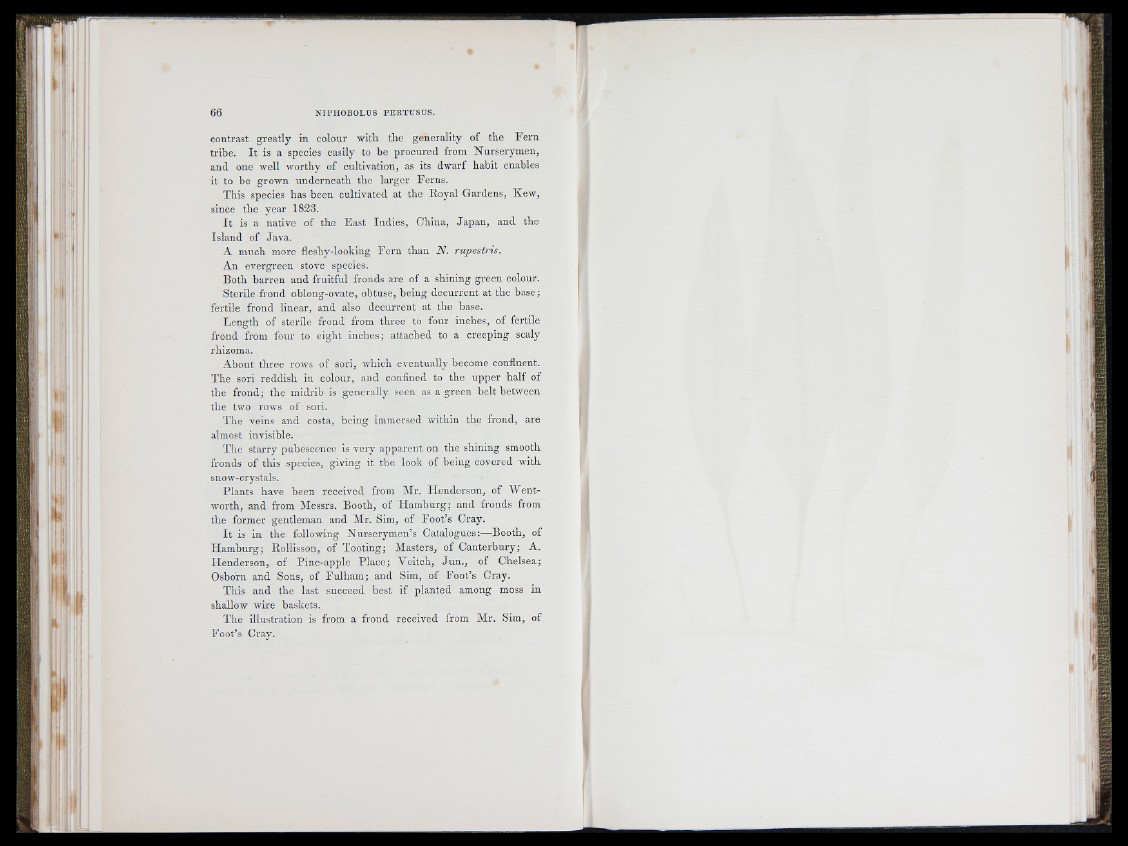
^ iil
'!l
h
n ;p!
[ I =’
[i
Ife |:S
ii r1i1 iAi
contrast g reatly in colour with the generality of the F e rn
tribe. I t is a species easily to be pro cu red from Nurserymen,
and one well worthy of cultivation, as its dwarf habit enables
it to be grown u nderneath the larger Ferns.
This species has been cultivated at the Royal Gardens, Kew,
since the year 1823.
I t is a native of the E ast Ind ie s, China, Ja p an , and the
Islan d of Java.
A much more fleshy-looking F e rn th an JV. rupestris.
A n evergreen stove species.
Both b arren and fruitful fronds are of a shining green colour.
S terile frond oblong-ovate, obtuse, being decu rreu t at the base;
fertile frond linear, and also d e current at the base.
L en g th of sterile frond from three to four inches, of fertile
frond from four to eight inches; attached to a creeping scaly
rhizoma.
A bout three rows of sori, which eventually become confluent.
The sori reddish in colour, and confined to the up p e r h a lf of
the frond; the midrib is generally seen as a green belt between
the two rows of sori.
T he veins and costa, being immersed within the frond, are
almost invisible.
T he sta rry pubescence is very apparent on the shining smooth
fronds of this species, giving it the look of being covered with
snow-crystals.
Plants have been received from Mr. H en derson, of W e n tworth,
and from Messrs. Booth, of H am b u rg ; and fronds from
the former gentleman and Mr. Sim, of P o o t’s Cray.
I t is in the following N u rse rym en ’s Catalogues:—Booth, of
H am b u rg ; Rollisson, of T ooting; Masters, of C an te rb u ry ; A.
H en derson, of P ine-apple P la c e ; Veitch, Ju n ., of Chelsea;
Osborn and Sons, of F u lh am ; and Sim, of F o o t’s Cray.
T his and the last succeed best if planted among moss in
shallow wire baskets.
T he illustration is from a frond received from Mr. Sim, of
P o o t’s Cray.